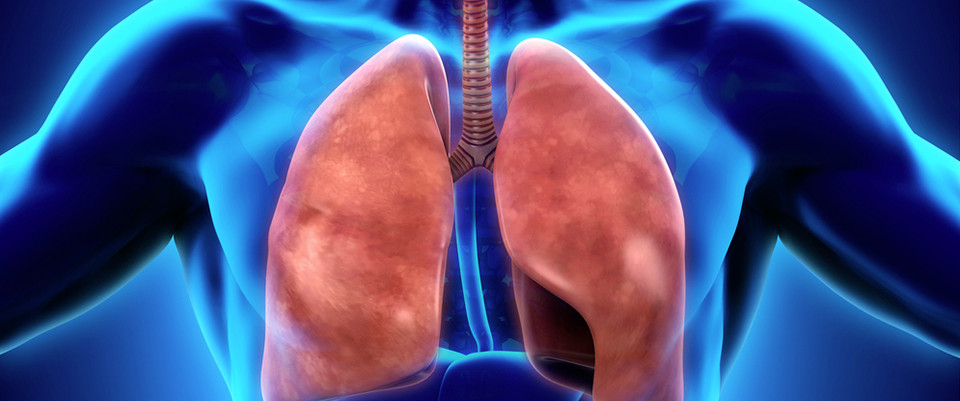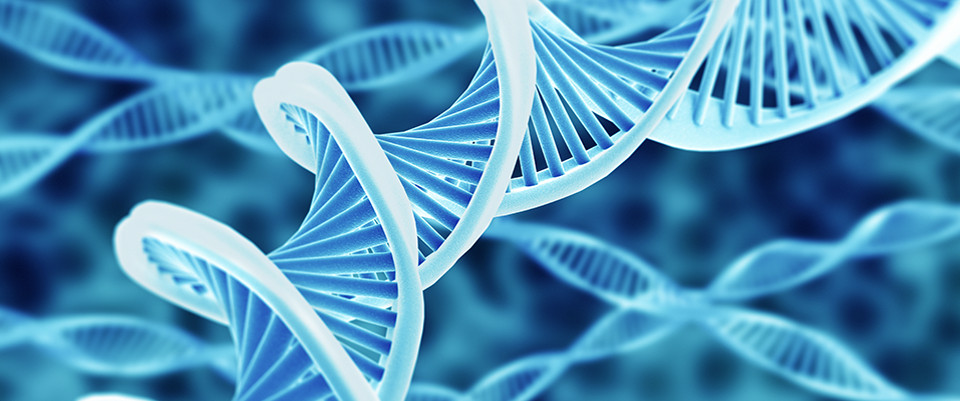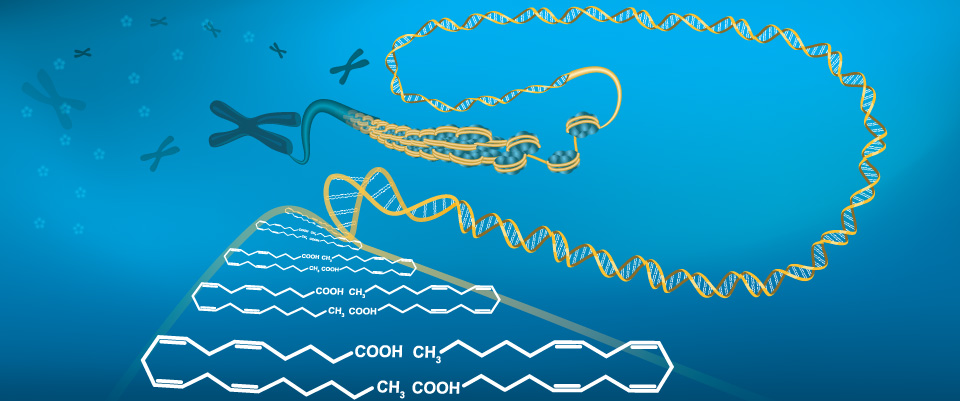PubMed
Adiposity and NMR-measured lipid and metabolic biomarkers among 30,000 Mexican adults
Commun Med (Lond). 2022 Nov 14;2(1):143. doi: 10.1038/s43856-022-00208-2.ABSTRACTBACKGROUND: Adiposity is a major cause of morbidity and mortality in part due to effects on blood lipids. Nuclear magnetic resonance (NMR) spectroscopy provides direct information on >130 biomarkers mostly related to blood lipid particles.METHODS: Among 28,934 Mexican adults without chronic disease and not taking lipid-lowering therapy, we examine the cross-sectional relevance of body-mass index (BMI), waist circumference (WC), waist-hip ratio (WHR), and hip circumference (HC) to NMR-measured metabolic biomarkers. Confounder-adjusted associations between each adiposity measure and NMR biomarkers are estimated before and after mutual adjustment for other adiposity measures.RESULTS: Markers of general (ie, BMI), abdominal (ie, WC and WHR) and gluteo-femoral (ie, HC) adiposity all display similar and strong associations across the NMR-platform of biomarkers, particularly for biomarkers that increase cardiometabolic risk. Higher adiposity associates with higher levels of Apolipoprotein-B (about 0.35, 0.30, 0.35, and 0.25 SD higher Apolipoprotein-B per 2-SD higher BMI, WHR, WC, and HC, respectively), higher levels of very low-density lipoprotein particles (and the cholesterol, triglycerides, and phospholipids within these lipoproteins), higher levels of all fatty acids (particularly mono-unsaturated fatty acids) and multiple changes in other metabolic biomarkers including higher levels of branched-chain amino acids and the inflammation biomarker glycoprotein acetyls. Associations for general and abdominal adiposity are fairly independent of each other but, given general and abdominal adiposity, higher gluteo-femoral adiposity is associated with a strongly favourable cardiometabolic lipid profile.CONCLUSIONS: Our results provide insight to the lipidic and metabolomic signatures of different adiposity markers in a previously understudied population where adiposity is common but lipid-lowering therapy is not.PMID:36376486 | DOI:10.1038/s43856-022-00208-2
Gut bacteriome and metabolome of Ascaris lumbricoides in patients
Sci Rep. 2022 Nov 14;12(1):19524. doi: 10.1038/s41598-022-23608-9.ABSTRACTThe most frequent intestinal helminth infections in humans are attributed to Ascaris lumbricoides, and there are concerns over the anthelminthic resistance of this species. The gut microbiota has essential roles in host physiology. Therefore, discovering host-parasite-microbiota interactions could help develop alternative helminthiasis treatments. Additionally, these interactions are modulated by functional metabolites that can reveal the mechanisms of infection and disease progression. Thus, we aimed to investigate bacteriomes in the gut of helminths and fecal samples of patients via next-generation sequencing. Our results showed that infection intensity was associated with the bacterial composition of helminth guts but not with the intestinal bacteriome of human hosts. Moreover, the metabolomes of A. lumbricoides in the heavy and light ascariasis cases were characterized using ultra-high performance liquid chromatography/time-of-flight mass spectrometry. Increased levels of essential biomolecules, such as amino acids, lipids, and nucleotide precursors, were found in the guts of helminths isolated from heavily infected patients, implying that these metabolites are related to egg production and ascariasis pathogenicity. These findings are the first step towards a more complete understanding of the mechanisms by which the bacteriome of helminth guts affect their colonization and may reveal novel and more effective approaches to parasitic disease therapy.PMID:36376367 | DOI:10.1038/s41598-022-23608-9
Multi-omics HeCaToS dataset of repeated dose toxicity for cardiotoxic & hepatotoxic compounds
Sci Data. 2022 Nov 14;9(1):699. doi: 10.1038/s41597-022-01825-1.ABSTRACTThe data currently described was generated within the EU/FP7 HeCaToS project (Hepatic and Cardiac Toxicity Systems modeling). The project aimed to develop an in silico prediction system to contribute to drug safety assessment for humans. For this purpose, multi-omics data of repeated dose toxicity were obtained for 10 hepatotoxic and 10 cardiotoxic compounds. Most data were gained from in vitro experiments in which 3D microtissues (either hepatic or cardiac) were exposed to a therapeutic (physiologically relevant concentrations calculated through PBPK-modeling) or a toxic dosing profile (IC20 after 7 days). Exposures lasted for 14 days and samples were obtained at 7 time points (therapeutic doses: 2-8-24-72-168-240-336 h; toxic doses 0-2-8-24-72-168-240 h). Transcriptomics (RNA sequencing & microRNA sequencing), proteomics (LC-MS), epigenomics (MeDIP sequencing) and metabolomics (LC-MS & NMR) data were obtained from these samples. Furthermore, functional endpoints (ATP content, Caspase3/7 and O2 consumption) were measured in exposed microtissues. Additionally, multi-omics data from human biopsies from patients are available. This data is now being released to the scientific community through the BioStudies data repository ( https://www.ebi.ac.uk/biostudies/ ).PMID:36376331 | DOI:10.1038/s41597-022-01825-1
Symbiotic bacteria-dependent expansion of MR1-reactive T cells causes autoimmunity in the absence of Bcl11b
Nat Commun. 2022 Nov 14;13(1):6948. doi: 10.1038/s41467-022-34802-8.ABSTRACTMHC class I-related protein 1 (MR1) is a metabolite-presenting molecule that restricts MR1-reactive T cells including mucosal-associated invariant T (MAIT) cells. In contrast to MAIT cells, the function of other MR1-restricted T cell subsets is largely unknown. Here, we report that mice in which a T cell-specific transcription factor, B-cell lymphoma/leukemia 11B (Bcl11b), was ablated in immature thymocytes (Bcl11b∆iThy mice) develop chronic inflammation. Bcl11b∆iThy mice lack conventional T cells and MAIT cells, whereas CD4+IL-18R+ αβ T cells expressing skewed Traj33 (Jα33)+ T cell receptors (TCR) accumulate in the periphery, which are necessary and sufficient for the pathogenesis. The disorders observed in Bcl11b∆iThy mice are ameliorated by MR1-deficiency, transfer of conventional T cells, or germ-free conditions. We further show the crystal structure of the TCR expressed by Traj33+ T cells expanded in Bcl11b∆iThy mice. Overall, we establish that MR1-reactive T cells have pathogenic potential.PMID:36376329 | DOI:10.1038/s41467-022-34802-8
P2X7 Receptor and Purinergic Signaling: Orchestrating Mitochondrial Dysfunction in Neurodegenerative Diseases
eNeuro. 2022 Nov 14;9(6):ENEURO.0092-22.2022. doi: 10.1523/ENEURO.0092-22.2022. Print 2022 Nov-Dec.ABSTRACTMitochondrial dysfunction is one of the basic hallmarks of cellular pathology in neurodegenerative diseases. Since the metabolic activity of neurons is highly dependent on energy supply, nerve cells are especially vulnerable to impaired mitochondrial function. Besides providing oxidative phosphorylation, mitochondria are also involved in controlling levels of second messengers such as Ca2+ ions and reactive oxygen species (ROS). Interestingly, the critical role of mitochondria as producers of ROS is closely related to P2XR purinergic receptors, the activity of which is modulated by free radicals. Here, we review the relationships between the purinergic signaling system and affected mitochondrial function. Purinergic signaling regulates numerous vital biological processes in the CNS. The two main purines, ATP and adenosine, act as excitatory and inhibitory neurotransmitters, respectively. Current evidence suggests that purinergic signaling best explains how neuronal activity is related to neuronal electrical activity and energy homeostasis, especially in the development of Alzheimer's and Parkinson's diseases. In this review, we focus on the mechanisms underlying the involvement of the P2RX7 purinoreceptor in triggering mitochondrial dysfunction during the development of neurodegenerative disorders. We also summarize various avenues by which the purine signaling pathway may trigger metabolic dysfunction contributing to neuronal death and the inflammatory activation of glial cells. Finally, we discuss the potential role of the purinergic system in the search for new therapeutic approaches to treat neurodegenerative diseases.PMID:36376084 | DOI:10.1523/ENEURO.0092-22.2022
Extracellular vesicles as source for the identification of minimally invasive molecular signatures in glioblastoma
Semin Cancer Biol. 2022 Nov 11:S1044-579X(22)00218-8. doi: 10.1016/j.semcancer.2022.11.004. Online ahead of print.ABSTRACTThe analysis of extracellular vesicles (EVs) as a source of cancer biomarkers is an emerging field since low-invasive biomarkers are highly demanded. EVs constitute a heterogeneous population of small membrane-contained vesicles that are present in most of body fluids. They are released by all cell types, including cancer cells and their cargo consists of nucleic acids, proteins and metabolites and varies depending on the biological-pathological state of the secretory cell. Therefore, EVs are considered as a potential source of reliable biomarkers for cancer. EV biomarkers in liquid biopsy can be a valuable tool to complement current medical technologies for cancer diagnosis, as their sampling is minimally invasive and can be repeated over time to monitor disease progression. In this review, we highlight the advances in EV biomarker research for cancer diagnosis, prognosis, and therapy monitoring. We especially focus on EV derived biomarkers for glioblastoma. The diagnosis and monitoring of glioblastoma still relies on imaging techniques, which are not sufficient to reflect the highly heterogenous and invasive nature of glioblastoma. Therefore, we discuss how the use of EV biomarkers could overcome the challenges faced in diagnosis and monitoring of glioblastoma.PMID:36375777 | DOI:10.1016/j.semcancer.2022.11.004
Genome-wide identification of FAR gene family and functional analysis of NlFAR10 during embryogenesis in the brown planthopper Nilaparvata lugens
Int J Biol Macromol. 2022 Nov 11:S0141-8130(22)02632-0. doi: 10.1016/j.ijbiomac.2022.11.075. Online ahead of print.ABSTRACTFatty acyl-CoA reductases (FARs) catalyze the synthesis of fatty alcohols from corresponding fatty acid precursors in organisms. However, the function of FARs in insect fecundity and embryogenesis remains largely unclear. Here, a total of 22 putative FAR proteins were identified in the brown planthopper Nilaparvata lugens, a hemipteran insect pest of rice, and most of them were highly expressed in embryonic stages. Among them, NlFAR10 was specifically and highly expressed in the later embryogenesis, but was promiscuously expressed in tissues of adults. The heterologously expressed NlFAR10 was able to produce the intermediate fatty acid alcohols from the corresponding acyl-CoA precursors. When NlFAR10 was silenced through RNAi in vivo, the embryogenesis was obviously inhibited, resulting in low hatching rates. Moreover, the metabolome analyses indicated that loss of NlFAR10 affected lipid metabolism and purine metabolism during embryogenesis. To the best of our knowledge, this is the first report of a FAR member affecting insect embryogenesis, thus providing a new target for future pest management.PMID:36375673 | DOI:10.1016/j.ijbiomac.2022.11.075
Early metabolomic, lipid and lipoprotein changes in response to medical and surgical therapeutic approaches to obesity
Metabolism. 2022 Nov 11:155346. doi: 10.1016/j.metabol.2022.155346. Online ahead of print.ABSTRACTBACKGROUND: Glucagon-like peptide-1 receptor agonists (GLP-1RA) and bariatric surgery have proven to be effective treatments for obesity and cardiometabolic conditions. We aimed to explore the early metabolomic changes in response to GLP-1RA (liraglutide) therapy vs. placebo and in comparison to bariatric surgery.METHODS: Three clinical studies were conducted: a bariatric surgery cohort study of participants with morbid obesity who underwent either Roux-en-Y gastric bypass (RYGB) or sleeve gastrectomy (SG) studied over four and twelve weeks, and two randomized placebo-controlled, crossover double blind studies of liraglutide vs. placebo administration in participants with type 2 diabetes (T2D) and participants with obesity studied for three and five weeks, respectively. Nuclear magnetic resonance spectroscopy-derived metabolomic data were assessed in all eligible participants who completed all the scheduled in-clinic visits. The primary outcome of the study was to explore the changes of the metabolome among participants with obesity with and without T2D receiving the GLP-1RA liraglutide vs. placebo and participants with obesity undergoing bariatric surgery during the three to five-week study period. In addition, we assessed the bariatric surgery effects longitudinally over the twelve weeks of the study and the differences between the bariatric surgery subgroups on the metabolome. The trials are registered with ClinicalTrials.gov, numbers NCT03851874, NCT01562678 and NCT02944500.RESULTS: Bariatric surgery had a more pronounced effect on weight and body mass index reduction (-14.19 ± 5.27 kg and - 5.19 ± 5.27, respectively, p < 0.001 for both) and resulted in more pronounced metabolomic and lipidomic changes compared to liraglutide therapy at four weeks postoperatively. Significant changes were observed in lipoprotein parameters, inflammatory markers, ketone bodies, citrate, and branched-chain amino acids after the first three to five weeks of intervention. After adjusting for the amount of weight loss, a significant difference among the study groups remained only for acetoacetate, β-hydroxybutyrate, and citrate (p < 0.05 after FDR correction). Glucose levels were significantly reduced in all intervention groups but mainly in the T2D group receiving GLP-1RA treatment. After adjusting for weight loss, only glucose levels remained significant (p = 0.001 after FDR correction), mainly due to the glucose change in the T2D group receiving GLP-1RA. Similar results with those observed at four weeks were observed in the surgical group when delta changes at twelve weeks were assessed. Comparing the two types of bariatric surgery, an intervention effect was more pronounced in the RYGB subgroup regarding total triglycerides, triglyceride-rich lipoprotein size, and trimethylamine-N-oxide (p for intervention: 0.031, 0.028, 0.036, respectively). However, after applying FDR correction, these changes deemed to be only suggestive; only time effects remained significant with no significant changes persisting in relation to the types of bariatric surgery.CONCLUSIONS: The results of this study suggest that the early metabolomic, lipid and lipoprotein changes observed between liraglutide treatment and bariatric surgery are similar and result largely from the changes in patients' body weight. Specific changes observed in the short-term post-surgical period between bariatric vs. nonsurgical treated participants, i.e., acetoacetate, β-hydroxybutyrate, and citrate changes, may reflect changes in patient diets and calorie intake indicating potential calorie and diet-driven metabolomics/lipidomic effects in the short-term postoperatively. Significant differences observed between SG and RYGB need to be confirmed and extended by future studies.PMID:36375643 | DOI:10.1016/j.metabol.2022.155346
UHPLC-MS/MS method for chiral separation of 3-hydroxy fatty acids on amylose-based chiral stationary phase and its application for the enantioselective analysis in plasma and platelets
J Pharm Biomed Anal. 2022 Nov 9;223:115151. doi: 10.1016/j.jpba.2022.115151. Online ahead of print.ABSTRACT3-Hydroxyfatty acids (3-OH-FAs) are formed in the hydration step during mitochondrial β-oxidation of saturated straight-chain fatty acids, which is a catabolic pathway that involves several enzymes. For an unbiased biological interpretation, an enantioselective analysis of 3-OH-FAs including their stereoisomers is necessary, which may contribute to the elucidation of enzymatic mechanisms in the biological pathways. In this work, an enantioselective gradient UHPLC-MS/MS method based on 1.6 µm particle polysaccharide column (Chiralpak IA-U) for chiral separation of 3-hydroxyfatty acids was developed which covers carbon chain length from C8 to C18 with a good resolution of R and S enantiomers. The method is fast and sensitive for detecting enantiomers of 3-OH-FAs by using a triple quadrupole instrument as a detector in a targeted, selected reaction monitoring (SRM) mode. A matrix matched-calibration strategy was applied for quantification of individual 3-OH-FA enantiomers. The method allows the simultaneous quantification of each enantiomer of 3-OH-FAs from C8-C18. One-phase liquid extraction with 2-propanol showed good extraction recoveries with over 90% on average. Further, the validated method was applied to investigate the alteration of 3-OH-FA enantiomers in platelets and plasma samples from human donors with different diagnoses of cardiovascular disease (acute coronary syndrome ACS, chronic coronary syndrome CCS). Both R and S enantiomers were detected in platelets and plasma samples with different predominance for R or S in dependence on carbon chain length, which might be associated with different functional enzymes of mitochondrial and peroxisomal β-oxidation. Finally, our study provides a new strategy for chiral separation and enantioselective analysis, showing great potential for targeted metabolomics in clinical biomarker discovery.PMID:36375395 | DOI:10.1016/j.jpba.2022.115151
LC-MS/MS determination of GTS-201, a dipeptide mimetic of the brain-derived neurotrophic factor, and neurotransmitter metabolites with application to a pharmacokinetic study in rats
J Pharm Biomed Anal. 2022 Oct 28;223:115125. doi: 10.1016/j.jpba.2022.115125. Online ahead of print.ABSTRACTBrain-derived neurotrophic factor (BDNF) is a member of the neurotrophin family with diverse psychopharmacological effects including antidepressant and anxiolytic actions. However, the clinical use of BDNF is limited due to its poor pharmacokinetic properties. The development of low-molecular-weight BDNF mimetics passing through the blood-brain barrier is an emerging strategy for improved managing psychiatric diseases. The present study characterizes a novel dipeptide mimetic of the 2nd BDNF loop named GTS-201, which exhibits psychotropic properties in experimental animal models of anxiety and alcohol dependence. The aim of this work was to study the pharmacokinetics of GTS-201 in rats at a saturating dosage of 5 mg/kg applied by the intraperitoneal route and to characterize the effects on neurotransmitter levels in the blood and brain. The maximum concentration (Cmax) of GTS-201 in the plasma (867 ± 69 ng/ml) was recorded at 35 ± 7.7 min after administration (Tmax) with a half-elimination period (T1/2) of 19.5 ± 1.8 min, while in the brain tissue Cmax was 14.92 ± 3.11 ng/ml, Tmax was 40.0 ± 7.7 min and T1/2 were 87.5 ± 12.7 min. The relative tissue availability of the GTS-201 for the brain reached 2.9%. At the dose applied, GTS-201 induced a significant increase of serotonin (5-fold) and dopamine levels in the brain tissue (8-fold) along with a decrease in cortisol content in blood plasma 45 min after acute administration. In summary, GTS-201 crosses the blood-brain barrier after acute administration and affects the activity of serotonergic and dopaminergic systems, which may underlie its neuropsychotropic effects described previously.PMID:36375394 | DOI:10.1016/j.jpba.2022.115125
Integrated untargeted fecal metabolomics and gut microbiota strategy for screening potential biomarkers associated with schizophrenia
J Psychiatr Res. 2022 Nov 7;156:628-638. doi: 10.1016/j.jpsychires.2022.10.072. Online ahead of print.ABSTRACTSchizophrenia (SZ) is a serious neurodevelopmental disorder. As the etiology of SZ is complex and the pathogenesis is not thoroughly understood, the diagnosis of different subtypes still depends on the subjective judgment of doctors. Therefore, there is an urgent need to develop early objective laboratory diagnostic biomarkers to screen different subtypes of patients as early as possible, and to implement targeted prevention and precision medicine to reduce the risk of SZ and improve patients' quality of life. In this study, untargeted metabolomics and 16S rDNA sequencing were used to analyze the differences in metabolites and gut microflora among 28 patients with two types of schizophrenia and 11 healthy subjects. The results showed that the metabolome and sequencing data could effectively discriminate among paranoid schizophrenia patients, undifferentiated schizophrenia patients and healthy controls. We obtained 65 metabolites and 76 microorganisms with significant changes, and fecal metabolite composition was significantly correlated with the differential genera (|r|>0.5), indicating that there was a regulatory relationship between the gut microbiota and the host metabolites. The gut microbiome, as an objective and measurable index, showed good diagnostic value for distinguishing schizophrenia patients from healthy people, especially with a combination of several differential microorganisms, which had the best diagnostic effect (AUC>0.9). Our results are conducive to understanding the complicated metabolic changes in SZ patients and providing valuable information for the clinical diagnosis of SZ.PMID:36375230 | DOI:10.1016/j.jpsychires.2022.10.072
Self-Assembled Nanoscale Manganese Oxides Enhance Carbon Capture by Diatoms
Environ Sci Technol. 2022 Nov 14. doi: 10.1021/acs.est.2c04500. Online ahead of print.ABSTRACTContinuous CO2 emissions from human activities increase atmospheric CO2 concentrations and affect global climate change. The carbon storage capacity of the ocean is 20-fold higher than that of the land, and diatoms contribute to approximately 40% of carbon capture in the ocean. Manganese (Mn) is a major driver of marine phytoplankton growth and the marine carbon pump. Here, we discovered self-assembled manganese oxides (MnOx) for CO2 fixation in a diatom-based biohybrid system. MnOx shared key features (e.g., di-μ-oxo-bridged Mn-Mn) with the Mn4CaO5 cluster of the biological catalyst in photosystem II and promoted photosynthesis and carbon capture by diatoms/MnOx. The CO2 capture capacity of diatoms/MnOx was 1.5-fold higher than that of diatoms alone. Diatoms/MnOx easily allocated carbon into proteins and lipids instead of carbohydrates. Metabolomics showed that the contents of several metabolites (e.g., lysine and inositol) were positively associated with increased CO2 capture. Diatoms/MnOx upregulated six genes encoding photosynthesis core proteins and a key rate-limiting enzyme (Rubisco, ribulose 1,5-bisphosphate carboxylase-oxygenase) in the Calvin-Benson-Bassham carbon assimilation cycle, revealing the link between MnOx and photosynthesis. These findings provide a route for offsetting anthropogenic CO2 emissions and inspiration for self-assembled biohybrid systems for carbon capture by marine phytoplankton.PMID:36375171 | DOI:10.1021/acs.est.2c04500
ROP signaling regulates spatial pattern of cell division and specification of meristem notch
Proc Natl Acad Sci U S A. 2022 Nov 22;119(47):e2117803119. doi: 10.1073/pnas.2117803119. Epub 2022 Nov 14.ABSTRACTThe formation of cell polarity is essential for many developmental processes such as polar cell growth and spatial patterning of cell division. A plant-specific ROP (Rho-like GTPases from Plants) subfamily of conserved Rho GTPase plays a crucial role in the regulation of cell polarity. However, the functional study of ROPs in angiosperm is challenging because of their functional redundancy. The Marchantia polymorpha genome encodes a single ROP gene, MpROP, providing an excellent genetic system to study ROP-dependent signaling pathways. Mprop knockout mutants exhibited rhizoid growth defects, and MpROP was localized at the tip of elongating rhizoids, establishing a role for MpROP in the control of polar cell growth and its functional conservation in plants. Furthermore, the Mprop knockout mutant showed defects in the formation of meristem notches associated with disorganized cell division patterns. These results reveal a critical function of MpROP in the regulation of plant development. Interestingly, these phenotypes were complemented not only by MpROP but also Arabidopsis AtROP2, supporting the conservation of ROP's function among land plants. Our results demonstrate a great potential for M. polymorpha as a powerful genetic system for functional and mechanistic elucidation of ROP signaling pathways during plant development.PMID:36375069 | DOI:10.1073/pnas.2117803119
Effects of dietary supplementation with histidine and β-alanine on blood plasma metabolome of broiler chickens at different ages
PLoS One. 2022 Nov 14;17(11):e0277476. doi: 10.1371/journal.pone.0277476. eCollection 2022.ABSTRACTHistidine is an essential amino acid for broiler chickens and a precursor for the dipeptides carnosine and anserine, but little information is available about its metabolism in modern, fast-growing broilers. We used untargeted metabolomics to investigate the metabolic changes caused by the use of different standardized ileal digestible His:Lys ratios in broiler diets with and without β-alanine supplementation. A total of 2204 broilers were randomly divided into 96 pens of 23 birds each. The pens were divided into 16 blocks, each containing one pen for all six feeding groups (total of 16 pens per group). These feeding groups were fed three different His:Lys ratios (0.44, 0.54, and 0.64, respectively) without and with a combination of 0.5% β-alanine supplementation. Five randomly selected chickens of one single randomly selected pen per feeding group were slaughtered on day 35 or 54, blood was collected from the neck vessel, and plasma was used for untargeted metabolomic analysis. Here we show that up to 56.0% of all metabolites analyzed were altered by age, whereas only 1.8% of metabolites were affected by the His:Lys ratio in the diet, and 1.5% by β-alanine supplementation. Two-factor analysis and metabolic pathway analysis showed no interaction between the His:Lys ratio and β-alanine supplementation. The effect of the His:Lys ratio in the diet was limited to histidine metabolism with a greater change in formiminoglutamate concentration. Supplementation of β-alanine showed changes in metabolites of several metabolic pathways; increased concentrations of 3-aminoisobutyrate showed the only direct relationship to β-alanine metabolism. The supplementation of β-alanine indicated few effects on histidine metabolism. These results suggest that the supplements used had limited effects or interactions on both His and β-alanine metabolism. In contrast, the birds' age has the strongest influence on the metabolome.PMID:36374928 | DOI:10.1371/journal.pone.0277476
Exercise sustains the hallmarks of health
J Sport Health Sci. 2022 Oct 29:S2095-2546(22)00103-X. doi: 10.1016/j.jshs.2022.10.003. Online ahead of print.ABSTRACTExercise has long been known for its active role in improving physical fitness and sustaining health. Regular moderate-intensity exercise improves all aspects of human health and is widely accepted as a preventative and therapeutic strategy for various diseases. It is well-documented that exercise maintains and restores homeostasis at the organismal, tissue, cellular, and molecular levels to stimulate positive physiological adaptations that consequently protect against various pathological conditions. Here we mainly summarize how moderate-intensity exercise affects the major hallmarks of health, including the integrity of barriers, containment of local perturbations, recycling and turnover, integration of circuitries, rhythmic oscillations, homeostatic resilience, hormetic regulation, as well as repair and regeneration. Furthermore, we summarize the current understanding of the mechanisms responsible for beneficial adaptations in response to exercise. This review aimed at providing a comprehensive summary of the vital biological mechanisms through which moderate-intensity exercise maintains health and opens a window for its application in other health interventions. We hope that continuing investigation in this field will further increase our understanding of the processes involved in the positive role of moderate-intensity exercise and thus get us closer to the identification of new therapeutics that improve quality of life.PMID:36374766 | DOI:10.1016/j.jshs.2022.10.003
Leveraging the HMBC to Facilitate Metabolite Identification
Anal Chem. 2022 Nov 14. doi: 10.1021/acs.analchem.2c02902. Online ahead of print.ABSTRACTThe accuracy and ease of metabolite assignments from a complex mixture are expected to be facilitated by employing a multispectral approach. The two-dimensional (2D) 1H-13C heteronuclear single quantum coherence (HSQC) and 2D 1H-1H-total correlation spectroscopy (TOCSY) are the experiments commonly used for metabolite assignments. The 2D 1H-13C HSQC-TOCSY and 2D 1H-13C heteronuclear multiple-bond correlation (HMBC) are routinely used by natural products chemists but have seen minimal usage in metabolomics despite the unique information, the nearly complete 1H-1H and 1H-13C and spin systems provided by these experiments that may improve the accuracy and reliability of metabolite assignments. The use of a 13C-labeled feedstock such as glucose is a routine practice in metabolomics to improve sensitivity and to emphasize the detection of specific metabolites but causes severe artifacts and an increase in spectral complexity in the HMBC experiment. To address this issue, the standard HMBC pulse sequence was modified to include carbon decoupling. Nonuniform sampling was also employed for rapid data collection. A dataset of reference 2D 1H-13C HMBC spectra was collected for 94 common metabolites. 13C-13C spin connectivity was then obtained by generating a covariance pseudo-spectrum from the carbon-decoupled HMBC and the 1H-13C HSQC-TOCSY spectra. The resulting 13C-13C pseudo-spectrum provides a connectivity map of the entire carbon backbone that uniquely describes each metabolite and would enable automated metabolite identification.PMID:36374521 | DOI:10.1021/acs.analchem.2c02902
Genetic deletion of Cyp4f18 disrupts the omega-3 epoxidation pathway and results in psoriasis-like dermatitis
FASEB J. 2022 Dec;36(12):e22648. doi: 10.1096/fj.202200982R.ABSTRACTCyp4f18 catalyzes the conversion of n-3 polyunsaturated fatty acids (PUFAs) into omega-3 epoxides, such as 17,18-epoxyeicosatetraenoic acid (17,18-EpETE) and 19,20-epoxydocosapentaenoic acid (19,20-EpDPE) from eicosapentaenoic acid (EPA), and docosahexaenoic acid (DHA), respectively. Cyp4f18-deficient mice spontaneously develop psoriasis-like dermatitis. A significant increase in the number of IL-17A-positive gamma delta (γδ) T cells in the skin and enlargement of draining lymph nodes was observed. These symptoms were drastically suppressed by antibiotic treatment. Cyp4f18 is highly expressed in dendritic cells (DCs), and Cyp4f18-deficient bone marrow-derived dendritic cells (BMDCs) show markedly increased expression levels of cytokines such as IL-23 and IL-1β in response to lipopolysaccharide (LPS) stimulation. Lipidomic analysis of lymph nodes and BMDCs revealed a significant decrease in a series of omega-3 epoxidized metabolites. Among them, 17,18-dihydroxyeicosatetraenoic acid (17,18-diHETE), a vicinal diol derived from EPA omega-3 epoxidation suppressed IL-23 production in LPS-stimulated BMDCs in Cyp4f18-deficient mice. These results demonstrate that Cyp4f18 endogenously produces omega-3-epoxidized metabolites in the draining lymph nodes, and these metabolites contribute to skin homeostasis by suppressing the excessive activation of the IL-23/IL-17 axis initiated by DCs.PMID:36374250 | DOI:10.1096/fj.202200982R
Towards inferring absolute concentrations from relative abundance in time-course GC-MS metabolomics data
Mol Omics. 2022 Nov 14. doi: 10.1039/d2mo00168c. Online ahead of print.ABSTRACTMetabolomics, the large-scale study of metabolites, has significant appeal as a source of information for metabolic modeling and other scientific applications. One common approach for measuring metabolomics data is gas chromatography-mass spectrometry (GC-MS). However, GC-MS metabolomics data are typically reported as relative abundances, precluding their use with approaches and tools where absolute concentrations are necessary. While chemical standards can be used to help provide quantification, their use is time-consuming, expensive, or even impossible due to their limited availability. The ability to infer absolute concentrations from GC-MS metabolomics data without chemical standards would have significant value. We hypothesized that when analyzing time-course metabolomics datasets, the mass balances of metabolism and other biological information could provide sufficient information towards inference of absolute concentrations. To demonstrate this, we developed and characterized MetaboPAC, a computational framework that uses two approaches-one based on kinetic equations and another using biological heuristics-to predict the most likely response factors that allow translation between relative abundances and absolute concentrations. When used to analyze noiseless synthetic data generated from multiple types of kinetic rate laws, MetaboPAC performs significantly better than negative control approaches when 20% of kinetic terms are known a priori. Under conditions of lower sampling frequency and high noise, MetaboPAC is still able to provide significant inference of concentrations in 3 of 4 models studied. This provides a starting point for leveraging biological knowledge to extract concentration information from time-course intracellular GC-MS metabolomics datasets, particularly for systems that are well-studied and have partially known kinetic structures.PMID:36374123 | DOI:10.1039/d2mo00168c
Maternal heterozygosity of Slc6a19 causes metabolic perturbation and congenital NAD deficiency disorder in mice
Dis Model Mech. 2023 May 1;16(5):dmm049647. doi: 10.1242/dmm.049647. Epub 2022 Nov 14.ABSTRACTNicotinamide adenine dinucleotide (NAD) is a key metabolite synthesised from vitamin B3 or tryptophan. Disruption of genes encoding NAD synthesis enzymes reduces NAD levels and causes congenital NAD deficiency disorder (CNDD), characterised by multiple congenital malformations. SLC6A19 (encoding B0AT1, a neutral amino acid transporter), represents the main transporter for free tryptophan in the intestine and kidney. Here, we tested whether Slc6a19 heterozygosity in mice limits the tryptophan available for NAD synthesis during pregnancy and causes adverse pregnancy outcomes. Pregnant Slc6a19+/- mice were fed diets depleted of vitamin B3, so that tryptophan was the source of NAD during gestation. This perturbed the NAD metabolome in pregnant Slc6a19+/- females, resulting in reduced NAD levels and increased rates of embryo loss. Surviving embryos were small and exhibited specific combinations of CNDD-associated malformations. Our results show that genes not directly involved in NAD synthesis can affect NAD metabolism and cause CNDD. They also suggest that human female carriers of a SLC6A19 loss-of-function allele might be susceptible to adverse pregnancy outcomes unless sufficient NAD precursor amounts are available during gestation. This article has an associated First Person interview with the first author of the paper.PMID:36374036 | DOI:10.1242/dmm.049647
Distinct Long- and Short-Term Adaptive Mechanisms in Pseudomonas aeruginosa
Microbiol Spectr. 2022 Nov 14:e0304322. doi: 10.1128/spectrum.03043-22. Online ahead of print.ABSTRACTHeterogeneous environments such as the chronically infected cystic fibrosis lung drive the diversification of Pseudomonas aeruginosa populations into, e.g., mucoid, alginate-overproducing isolates or small-colony variants (SCVs). In this study, we performed extensive genome and transcriptome profiling on a clinical SCV isolate that exhibited high cyclic diguanylate (c-di-GMP) levels and a mucoid phenotype. We observed a delayed, stepwise decrease of the high levels of c-di-GMP as well as alginate gene expression upon passaging the SCV under noninducing, rich medium growth conditions over 7 days. Upon prolonged passaging, this lagging reduction of the high c-di-GMP levels under noninducing planktonic conditions (reminiscent of a hysteretic response) was followed by a phenotypic switch to a large-colony morphology, which could be linked to mutations in the Gac/Rsm signaling pathway. Complementation of the Gac/Rsm signaling-negative large-colony variants with a functional GacSA system restored the SCV colony morphotype but was not able to restore the high c-di-GMP levels of the SCV. Our data thus suggest that expression of the SCV colony morphotype and modulation of c-di-GMP levels are genetically separable and follow different evolutionary paths. The delayed switching of c-di-GMP levels in response to fluctuating environmental conditions might provide a unique opportunity to include a time dimension to close the gap between short-term phenotypic and long-term genetic adaptation to biofilm-associated growth conditions. IMPORTANCE Extreme environments, such as those encountered during an infection process in the human host, make effective bacterial adaptation inevitable. While bacteria adapt individually by activating stress responses, long-term adaptation of bacterial communities to challenging conditions can be achieved via genetic fixation of favorable traits. In this study, we describe a two-pronged bacterial stress resistance strategy in the opportunistic pathogen Pseudomonas aeruginosa. We show that the production of adjusted elevated c-di-GMP levels, which drive protected biofilm-associated phenotypes in vivo, resembles a stable hysteretic response which prevents unwanted frequent switching. Cellular hysteresis might provide a link between individual adaptability and evolutionary adaptation to ensure the evolutionary persistence of host-adapted stress response strategies.PMID:36374016 | DOI:10.1128/spectrum.03043-22











